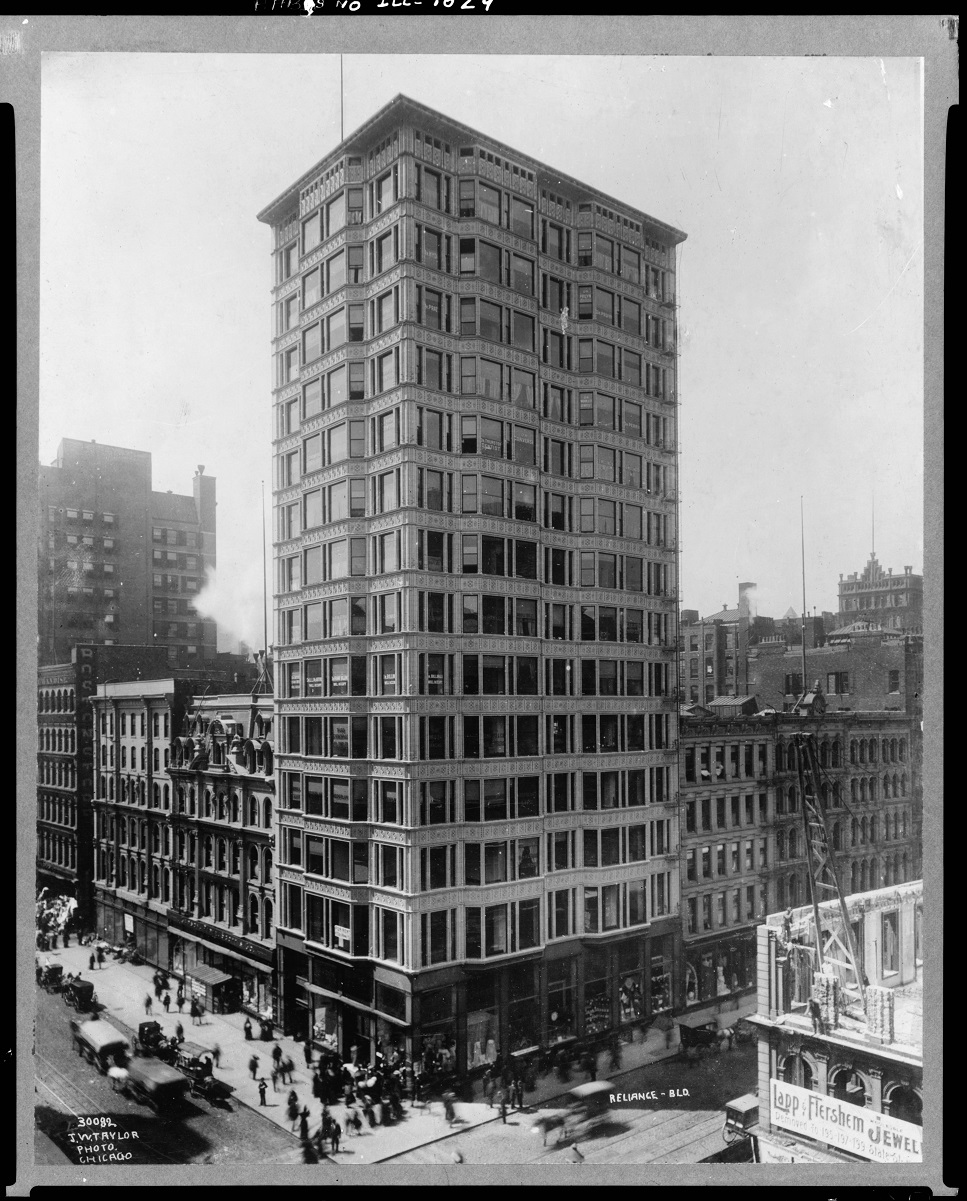October 21, 2022, 12:00 PM - 2:00 PM
The Living Architectural History of Chicago's Loop
Bezazian Branch, Chicago Public Library
1226 West Ainslie Street, Chicago, Illinois 60640
 Reliance Building, 32 North State Street, Chicago, Cook County, IL, 8 x 10 in. Library of Congress Prints and Photographs Division, HABS ILL,16-CHIG,30-2.
Reliance Building, 32 North State Street, Chicago, Cook County, IL, 8 x 10 in. Library of Congress Prints and Photographs Division, HABS ILL,16-CHIG,30-2.This file comes from the Historic American Buildings Survey (HABS), Historic American Engineering Record (HAER) or Historic American Landscapes Survey (HALS). These are programs of the National Park Service established for the purpose of documenting historic places. Records consist of measured drawings, archival photographs, and written reports. Public domain.
To register
The area at the heart of Chicago—the Loop—remains key to its identity as a city built under the impact of modernism. Crowded as the Loop now is by buildings old and new, our openness to the Loop’s everyday marvels can easily become blunted as we rush to catch buses or barely pause on our way to other destinations. If we transport ourselves back to the twentieth century’s opening decades, however, we encounter iconic buildings, like the massively walled Monadnock or the cream-colored, light-filled Reliance, relatively free of neighbors. In a lunchtime talk, art historian Margaret MacNamidhe (School of the Art Institute of Chicago) looks back in time without losing sight of the present, telling the stories of people associated with a handful of Chicago’s iconic buildings and rendering a vivid picture of an area etched already in memory.
Presented by Red Line Service, an organization that creates cultural programs by and for Chicagoans with a lived experience of homelessness, this program is part of a series of talks by Chicago-based art historians that examines a variety of creative practices and settings where art is produced, questions ways in which art history is written, and introduces new audiences to art history. Each program is free, open to the public, and includes a meal, bringing together audiences to develop community through learning.
